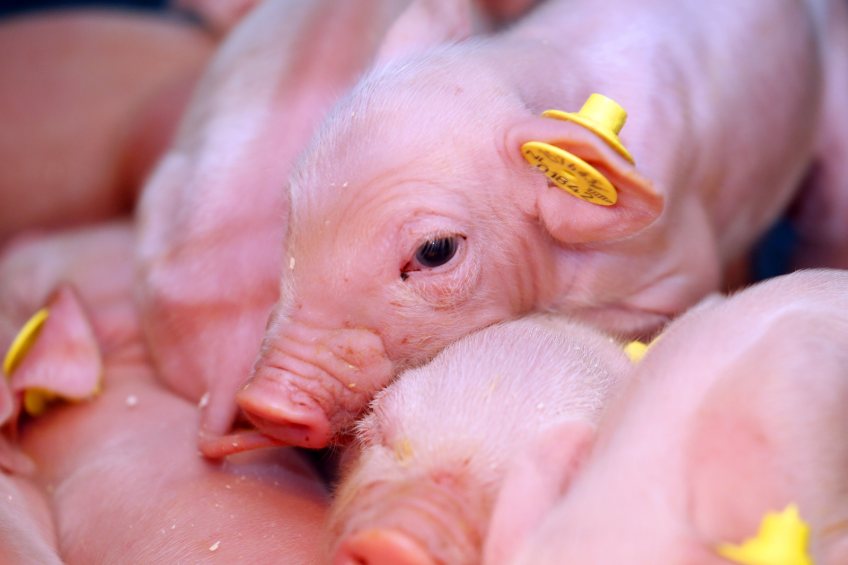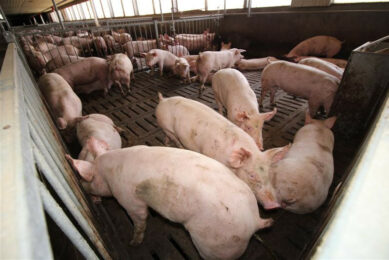ASF-resistant pigs bred in UK

The University of Edinburgh’s Roslin Institute is breeding pigs with a warthog gene to resist African Swine Fever (ASF). The newborn piglets could be among the first commercially viable GM animals to have been created in Britain, reports the Guardian.
The piglets are born on an isolated farm outside Edinburgh. Professor Bruce Whitelaw, head of developmental biology at the University of Edinburgh’s Roslin Institute, which is responsible for the pigs, believes that the newborn piglets, which are designed to be resistant to the disease African Swine Fever, could be among the first commercially viable GM animals to have been created in Britain.
Commercially available
“We need these animals to deliver something that could be a product,” said Whitelaw. “If these pigs show resilience, we will go to the regulators. The limitations are no longer technical, they’re legal.” The African Swine Fever-resistant pigs live alongside others engineered to have enhanced immunity to swine flu, and the pig respiratory disease, PRRS. Whitelaw believes that such animals could be commercially available within five to ten years.
No antibiotic resistance genes
The breakthrough, according to Whitelaw, has been the development of new ‘ultra precise’ gene editing tools that introduce changes in a way that is indistinguishable from naturally occurring mutations. The new techniques also overcome three major objections to GM in the past: the use of viruses to “carry” genetic changes into the pigs’ cells, the need to use antibiotic resistance genes in the modification process, which has been seen as an environmental threat, and the need for cloning.
“There are no markers, no vectors,” said Whitelaw. “People are absolutely not going to want to eat animals with fluorescent snouts.” The welfare aspect of creating disease resistant animals may also prove more acceptable to the public than simply trying to create bigger, meatier farm animals, he argues. “We’re not trying to make huge pigs, we’re trying to make healthier ones,” he said. “I’d be staggered if anyone said ‘No, I don’t want my animal to be healthier’.”
‘Farmers are ready’
Farmers have also welcomed the focus on disease resistance, because unlike size and fertility, resilience to new diseases is almost impossible to breed in using traditional methods. At a recent industry talk Whitelaw gave on the ASF trial, the first question, from a Lithuanian farmer was “When can I get these animals?” he said. “Farmers are ready.”
The trial, due to begin later this summer at either the Pirbright Institute or the Animal Health and Veterinary Laboratories Agency in Weybridge, will involve exposing 12 ‘edited’ pigs and 12 normal animals to the virus and testing mortality and transmission rates in the two groups to assess whether the modified pigs fare better.
A fertilised egg and molecular scissors
The gene-editing technique works by taking a fertilised egg and using molecular scissors to snip the pig genome at the target site – in this case an immune gene called RELA. The cell’s natural repair process introduces a minor error, making the gene slightly less active than the normal version, producing a gentler immune response closer to that seen in warthogs. Scientists think this should confer resistance to African swine fever, because the disease causes the pig immune system to go into overdrive. “The immune system grossly overreacts to something that itself isn’t that harmful,” said Simon Lillico, a senior researcher at Roslin. “Warthogs still get infected, they just don’t drop dead.”
The scientists have also created pigs with the exact warthog version of the gene and the first three of these pigs are now entering a breeding programme ahead of a second trial due to begin next year.
Where did ASF occur until so far in the European Union?











